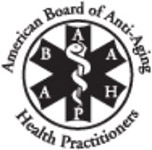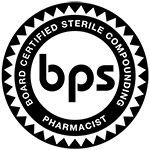
Photo by Nathan Hanna on Unsplash
Whether you’re a parent or a pet owner, it’s a situation that’s probably familiar to you: you’re trying to give important medication to someone who keeps refusing to take it. Most oral medicines aren’t known for tasting great, making them highly unappealing to children, pets, and anyone with a sensitivity to taste.
Thankfully, there are ways to make bitter, unpleasant medications more palatable, even for kids with picky tastes. When you’re giving medicine to either kids or pets, one tried and true method is to mask the taste with food. We’ve compiled a list of some of the best foods to disguise medicine.
Best Foods to Disguise Medicine for Kids
Even when a child is feeling under the weather, it’s no guarantee that they’re going to cooperate when it’s time to take medication. In fact, many kids will spit out or refuse to take medicine, even knowing that’s supposed to make them feel better.
It’s normal for young children to be pickier eaters, and this doesn’t go away when they’re ill. Many common illnesses can even add nausea to the equation, making getting a picky eater to keep anything down an almost impossible task. It doesn’t matter if you’re giving them a pill, a chewable, or a syrup; most medications don’t taste good on their own.
If your child is resistant to taking medication because of the taste, just know that there are plenty of options available to help. One of the simplest methods involves disguising the medicine in foods that the child enjoys. Of course, the specific foods that work best will vary with each child’s own tastes. Try experimenting with favorite snacks and with soft foods like applesauce that are easy on a sore throat and a convenient texture for mixing in medicines.[1]Martir, J., Flanagan, T., Mann, J., & Fotaki, N. (2020). Co-administration of Pediatric Medicines with Food and Drinks in the Context of Their Physicochemical Properties-a Global Perspective on … Continue reading
However, before you ever mix any medication into your child’s food, make sure to have a conversation with their pharmacist. The effectiveness of some medications can change based on whether or not you crush them up.[2]van Welie, S., Wijma, L., Beerden, T., van Doormaal, J., & Taxis, K. (2016). Effect of warning symbols in combination with education on the frequency of erroneously crushing medication in nursing … Continue reading This is especially true when it comes to time-release capsules or pills. You’ll also need to be careful that your children eat the entire food item. If anything is remaining, then they may not have taken the full dose of their medication.
An Ice Cream Chaser

Photo by Mieke Campbell on Unsplash
For this method, you don’t even need to mix the medicine in with the food item. Instead, all you need to do is use a spoonful of your child’s favorite ice cream as a chaser. This is still an effective way to distract them from the unpleasant taste that the medicine leaves in their mouth, and it additionally creates an incentive for taking the medicine.
Make a Smoothie
You can blend some medications in with a smoothie. If you’re making the smoothie from scratch, it’s easy to stick to ingredients that you know your child likes. As we mentioned earlier, however, be wary about just crushing up pills and adding them to your favorite smoothie recipe. Check with your pediatrician or pharmacist to make sure the medicine you’re using won’t be affected by being crushed or mixed with food.
Mix It Into Juice (as Long as It’s Not Grapefruit)
It’s another simple recipe, but it can still be a highly effective one. If the bitter taste of the medicine is masked by a sweet fruit or vegetable juice, your child may not even notice the medication is there. However, if you opt for this method, stay away from grapefruit juice. Grapefruit can react poorly with some medications, which can negatively impact their effectiveness.[3]Dosoky, N. S., & Setzer, W. N. (2018). Biological Activities and Safety of Citrus spp. Essential Oils. International journal of molecular sciences, 19(7), 1966. … Continue reading
Dip It in a Pancake
If your child is a fan of pancakes or sweet breakfast foods, then this could be the perfect delivery method for you. Rather than cooking up a fresh pancake that contains a pill, you can use this strategy to help your kid take syrups or liquid medicine. Before you feed your young child a bite of the pancake, dip that small piece into the medicine. Wait until the medication has been absorbed by the pancake, and then feed the bite to your child.
Put It on a Waffle
In a similar vein to the last suggestion, this is another possibility if breakfast is your child’s favorite meal of the day. But instead of a pancake, you can use a waffle.
Rather than dipping the food before each bite, you can simply add a small amount of medication into the waffle holes. Keep adding a bit more and letting your child have a bite until they’ve consumed the entire dose.
Best Foods to Disguise Medicine for Pets

Photo by Annie Spratt on Unsplash
Giving medicine to a pet is complicated, and some kinds of animals will be more difficult than others. Even though it feels like your dog will eat just about anything, it’s no guarantee that they’re going to scarf down a pill before the taste is covered up. As soon as they get the bitter or unpleasant taste in their mouth, don’t be surprised if the animal spits their medication right back out.
If you’re disguising your pet’s medication with food, you also need to be careful about the food items you’re choosing. We all know that chocolate isn’t healthy for dogs, but this isn’t the only example of a food that’s dangerous for a particular animal to consume. In other words, you can’t just grab the first piece of food you see lying around. You have to make sure it’s safe for your animal to consume.
Another important word of advice: while it may seem like a simple solution to crush up your pet’s medications and sprinkle them into their regular food, this plan can be extremely counterproductive. Many animal medications come with a coating that’s intended to make them more palatable.[4]Youssef, F. S., El-Banna, H. A., Elzorba, H. Y., & Galal, A. M. (2019). Application of some nanoparticles in the field of veterinary medicine. International journal of veterinary science and … Continue reading In actuality, the medication within is going to taste worse than if it was consumed whole with the coating masking it.
If you are willing to do the research for your particular type of animal and still want to use food to make your pet’s medication more palatable, then there are quite a few options for most common types of pets. Again, always make sure that the food item you choose is safe for your specific animal.
Creamy Peanut Butter
If you’ve ever tried feeding your dog a big spoonful of peanut butter, there’s a good chance that they enjoyed it. This isn’t a flawless solution, though. There are a few variables worth keeping in mind. For instance, peanut butter isn’t always easy for an animal to lick off of a spoon – at least, without leaving anything behind. If you’re going to use this method, you’ll need to ensure that your animal is getting their full dose of medicine. Also, make sure that the peanut butter doesn’t contain sugar substitutes like xylitol.[5]Schmid, R. D., & Hovda, L. R. (2016). Acute Hepatic Failure in a Dog after Xylitol Ingestion. Journal of medical toxicology : official journal of the American College of Medical Toxicology, … Continue reading
Cooked Meat Products
To preface, you should never be using raw meats to feed medicine to your pets. Although your dog might be enthusiastic about the taste, there’s a high risk of bacterial contamination.[6]Runesvärd, E., Wikström, C., Fernström, L. L., & Hansson, I. (2020). Presence of pathogenic bacteria in feces from dogs fed raw meat-based diets or dry kibble. The Veterinary record, 187(9), … Continue reading Instead, opt for a simple piece of cooked meat, like a small meatball or even some plain chicken.
Another option is to wrap pills up in lunch meats or hot dogs. Still, this isn’t the ideal strategy. These processed meats are high in sodium and preservatives, so they aren’t the healthiest options for your dog.[7]Wilde, P., Pomeranz, J. L., Lizewski, L. J., Ruan, M., Mozaffarian, D., & Zhang, F. F. (2019). Legal Feasibility of US Government Policies to Reduce Cancer Risk by Reducing Intake of Processed … Continue reading Use the smallest chunks possible if you go this route.
Best Methods to Disguise Medicine: Is Food the Way to Go?
Food is one way to make medicine more palatable for pets or children.[8]Downer, S., Berkowitz, S. A., Harlan, T. S., Olstad, D. L., & Mozaffarian, D. (2020). Food is medicine: actions to integrate food and nutrition into healthcare. BMJ (Clinical research ed.), 369, … Continue reading For many people, it may not even be the most practical solution. You can also consider using a compounding pharmacy. That way, you don’t need to mask the taste of medication. It will already be sold to you mixed with high quality flavoring agents and tasting perfectly fine.
By turning to a compounding pharmacy, you can receive custom medication in unique flavors. These are flavors that you likely wouldn’t be able to pick up from your corner chain pharmacy. A compounding pharmacy can create medicine that’s personalized to your child or animal’s unique tastes.
Medicine That Appeals to Your Child or Pet
The team at Compounding Rx has access to a number of flavorings and colorings that can make medication far more appealing. When we adjust the color or taste of medicine, you don’t need to worry about whether the medication will lose effectiveness or become diluted. Our cutting-edge pediatric services ensure your medication will be just as effective as ever, only easier for your child to ingest. You’re guaranteed the same level of assurance for all family members, so we provide custom medication for pets too!
Chief Operating Officer, The Compounding Pharmacy of America
Matthew Poteet, Pharm.D. graduated with Honors from Lee University with a Bachelors of Science in Biological Science. After his undergraduate training, he completed the Doctor of Pharmacy program at Mercer University Southern School of Pharmacy, graduating in 2004. Dr. Poteet has spent much of his pharmacy career on staff at two of the most prestigious academic teaching hospitals in the Southeast; Emory University in Atlanta and Vanderbilt University Medical Center in Nashville. At these institutions he received extensive experience and training in sterile products compounding.
He returned home to East Tennessee in 2010, where he has held the position of Pharmacy Director at two sterile products pharmacies in Knoxville. Matthew lives in Knoxville with his wife, Chris. Dr. Poteet is Tennessee’s first Board Certified Anti-Aging Pharmacist by the American Academy of Anti-Aging Medicine.
Sources:
| ↑1 | Martir, J., Flanagan, T., Mann, J., & Fotaki, N. (2020). Co-administration of Pediatric Medicines with Food and Drinks in the Context of Their Physicochemical Properties-a Global Perspective on Practices and Recommendations. The AAPS journal, 22(2), 54. https://doi.org/10.1208/s12248-020-0432-9 |
|---|---|
| ↑2 | van Welie, S., Wijma, L., Beerden, T., van Doormaal, J., & Taxis, K. (2016). Effect of warning symbols in combination with education on the frequency of erroneously crushing medication in nursing homes: an uncontrolled before and after study. BMJ open, 6(8), e012286. https://doi.org/10.1136/bmjopen-2016-012286 |
| ↑3 | Dosoky, N. S., & Setzer, W. N. (2018). Biological Activities and Safety of Citrus spp. Essential Oils. International journal of molecular sciences, 19(7), 1966. https://doi.org/10.3390/ijms19071966 |
| ↑4 | Youssef, F. S., El-Banna, H. A., Elzorba, H. Y., & Galal, A. M. (2019). Application of some nanoparticles in the field of veterinary medicine. International journal of veterinary science and medicine, 7(1), 78–93. https://doi.org/10.1080/23144599.2019.1691379 |
| ↑5 | Schmid, R. D., & Hovda, L. R. (2016). Acute Hepatic Failure in a Dog after Xylitol Ingestion. Journal of medical toxicology : official journal of the American College of Medical Toxicology, 12(2), 201–205. https://doi.org/10.1007/s13181-015-0531-7 |
| ↑6 | Runesvärd, E., Wikström, C., Fernström, L. L., & Hansson, I. (2020). Presence of pathogenic bacteria in feces from dogs fed raw meat-based diets or dry kibble. The Veterinary record, 187(9), e71. https://doi.org/10.1136/vr.105644 |
| ↑7 | Wilde, P., Pomeranz, J. L., Lizewski, L. J., Ruan, M., Mozaffarian, D., & Zhang, F. F. (2019). Legal Feasibility of US Government Policies to Reduce Cancer Risk by Reducing Intake of Processed Meat. The Milbank quarterly, 97(2), 420–448. https://doi.org/10.1111/1468-0009.12385 |
| ↑8 | Downer, S., Berkowitz, S. A., Harlan, T. S., Olstad, D. L., & Mozaffarian, D. (2020). Food is medicine: actions to integrate food and nutrition into healthcare. BMJ (Clinical research ed.), 369, m2482. https://doi.org/10.1136/bmj.m2482 |
 Subscribe to Our Newsletter
Subscribe to Our Newsletter


